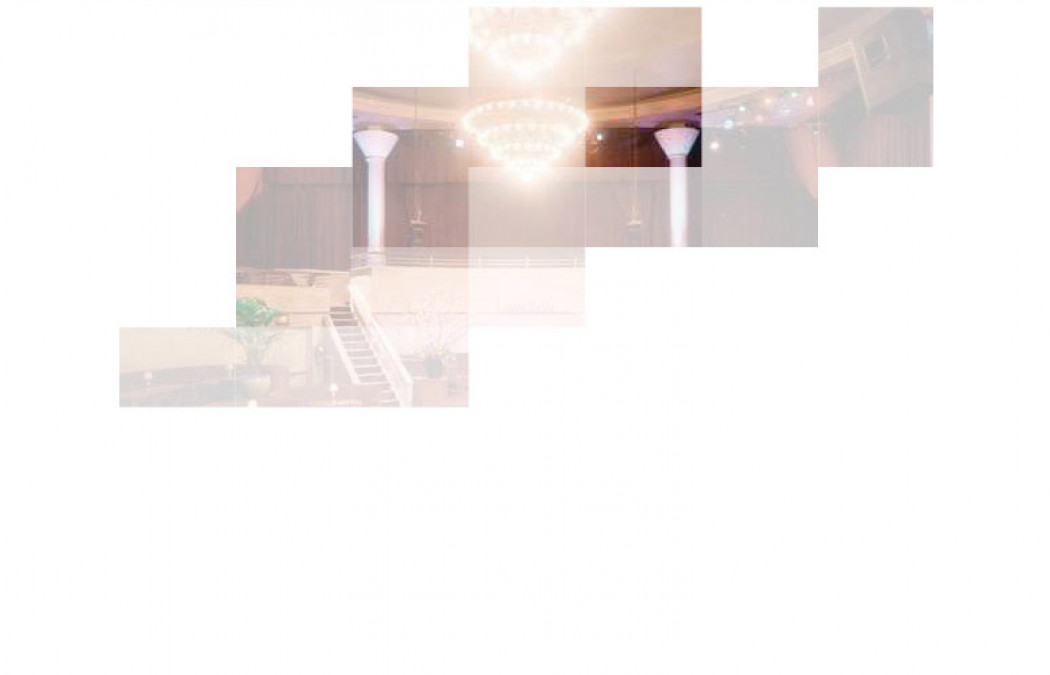Gary Simmons, Wake
Launch date: February 16, 2000, Artist Web Projects
Overview
For Wake, his first project for the web, Gary Simmons has photographed empty ballrooms and other dance spaces redolent of an earlier era. As the viewer moves the mouse over the screen, image fragments appear then quickly fade, making it impossible to view any of his nine haunting scenes in its entirety and at one time. Mediated by a soundtrack comprised of the humming of old but well-known songs that are still popular favorites, these sites seem generated as much by involuntary memory as by technology.
In 2020, this project was reprogrammed in HTML5 because Flash is no longer supported by most browsers. The initial Flash version can be viewed here.
There is an absence in Gary Simmons' work -- from his child-sized Klan robes (6X, 1990) or row of empty gilded sneakers (Line Up, 1993), to his recent photographs of uninhabited pedagogical spaces -- that is as salient as any presence one could portray. The act of imagining the people who might inhabit these objects and spaces invites a speculation ultimately more unsettling than facing any corporeal presence.
For Wake, Simmons photographed nine dance spaces, each devoid of people and each shot in a style reminiscent of portraiture. These rooms range from ornate, baroque ballrooms to a single relatively austere auditorium. Simmons does not present them in their entirety: rather, each is programmed in such a way that sections of the image are revealed as the viewer passes a mouse across the screen. In what might be considered a visual metaphor for the act of remembering, as each fragment appears it begins immediately to fade, making it impossible to see the complete image at one time. Weddings, dances, and other special occasions that take place in venues like these, while sometimes monumental in our memories, in retrospect seems like just a flicker of time.
In a twist on the technique employed in Simmons' most well-known work, erasure, the movement of the viewers' hand across the screen wipes away the empty whiteness. Simmons began drawing with chalk partly out of practical reasons -- he had a large supply of blackboards at his disposal -- but he quickly became attracted to the formal qualities and performative aspects of what has become an ongoing series of Erasure Drawings. On blackboards and walls, Simmons has first sketched, then partially erased, imagery addressing issues pertaining to race, pedagogy, and culture. Having completed the drawings he begins to obliterate them, leaving partially erased images that emanate a feeling of loss. "I like the idea of the trace—the information that blurs in and out—it's like a ghost...kind of there, sometimes not," Simmons said at a talk he gave at MOMA in 1999.
In Wake, the act of erasure is reversed and placed in the hands of the viewer. Simmons capitalized on the interactive potential of the medium by turning over some control to the user: there are infinite possibilities for the imagery created while exposing the image. Simmons was also interested in devising a place within the web that overlaid the act of navigating networked space with the act of navigating, or revealing, the representation of a physical space. And, as is the case in surfing the web at large, the path traversed is always different, the entirety never grasped.
The audio segments that accompany the screens are excerpts from well-known songs popular in earlier eras, including Blue Moon, Cry me a River, Mr. Sandman, Falling in Love Again, and more. A male and a female voice hum the well-known sections of each song, most often as a duet. This humming, which feels at times as if it were coming from inside one's own head, emphasizes the intensely personal feel of the spaces within Wake, whether romantic, nostalgic, or sad. The title is telling given that "wake" has two different meanings, both evoked here: evidence of a passing and the mourning of a loss.
Artist
Gary Simmons
Gary Simmons was born in New York City in 1964, where he currently lives and works.
